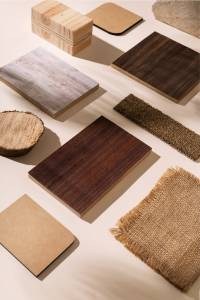Description
Particleboard: Your Versatile and Affordable Building Material
Particleboard, also known as chipboard, is an engineered wood product manufactured from wood particles, resin, and wax. These components are combined and pressed under high pressure and heat to form a flat panel. This process creates a strong, stable, and cost-effective alternative to solid wood, making it a popular choice for a wide range of applications.
Key Features & Benefits:
- Affordability: Particleboard is significantly less expensive than solid wood, making it an economical choice for various projects.
- Consistency: Unlike natural wood, particleboard offers consistent density, thickness, and size, simplifying fabrication and reducing waste.
- Workability: It's relatively easy to cut, drill, and shape using standard woodworking tools. It also accepts finishes well, allowing for customization.
- Stability: While susceptible to moisture, properly treated particleboard offers good dimensional stability in controlled environments.
- Sustainability: Particleboard utilizes wood residues and by-products, reducing waste and promoting sustainable forestry practices.
- Versatility: Suitable for a broad array of applications, from furniture construction to shelving and interior components.
Types of Particleboard:
Different grades of particleboard exist, each suited for specific uses:
- Standard Particleboard: The most common type, ideal for interior applications where moisture exposure is minimal. Often used in furniture, shelving, and cabinet backing.
- Moisture-Resistant Particleboard (MR): Treated with a wax or resin to increase its resistance to moisture. Suitable for applications with higher humidity levels, such as bathrooms or kitchens, but not for direct outdoor exposure.
- Exterior-Grade Particleboard: Specifically designed for outdoor use, providing greater resistance to moisture and weathering. Less common than MR particleboard.
Applications:
Particleboard finds use in a variety of applications, including:
- Furniture Manufacturing: A cornerstone material in furniture construction, providing a base for cabinets, shelves, drawers, and tabletops.
- Cabinetry: Used for cabinet backs, sides, and internal components.
- Shelving: Ideal for creating affordable and sturdy shelving units.
- Interior Walls & Partitions: Can be used as a base for wall paneling or partitions in interior construction.
- Flooring Underlayment: Provides a stable and level base for flooring installations.
- Packaging: Used in the manufacturing of certain types of packaging materials.
Considerations:
- Moisture Sensitivity: Standard particleboard is susceptible to swelling and degradation when exposed to excessive moisture. Choosing the appropriate grade is crucial.
- Edge Treatment: Particleboard edges are often exposed and can be prone to chipping. Edge banding is often necessary for a finished look and to protect against moisture.
- Screw Holding Capacity: While it accepts screws well, pre-drilling is recommended to prevent splitting.
Choosing the Right Particleboard:
When selecting particleboard, consider the following:
- Intended Application: Choose the grade (standard, MR, exterior) appropriate for the intended use.
- Thickness: Select the thickness necessary for the required strength and stability.
- Size: Particleboard is available in various sizes, making it easy to find panels to suit project needs.
Particleboard offers a balance of affordability, workability, and versatility, making it a valuable material for a wide range of DIY and professional projects. By understanding its properties and limitations, you can effectively utilize this engineered wood product to achieve your desired results.
